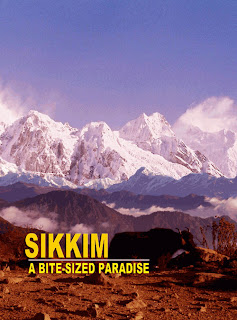Behind the News
Though the term ‘Media’ connotes different fields, it is more often associated with print and audio-visual media. There was a time when newspapers were the sole source of information for events happening all over the world. With technological advancement today, there are several ways through which we can keep ourselves updated about ‘second to second’ happenings across the universe. As new and latest devices are entering the market, the competition is hotting up. To beat competition, the print as well as audio-visual media are resorting to every gimmick they can think of to gain readership/viewership. The media blitzkrieg has however left the audience confused about the authenticity of news that is being dished out to them. The October 2011 issue of One India One People highlights the changing face of media amidst cut-throat competition. The articles carry insider’s views as these have been contributed by senior journalists.
Trial by the media is on the rise in India
In ‘Merchandisation of the Media’, P. K. Ravindranath, rues the downslide of the quality and content of Indian media as Page 3 culture, unprofessionalism, commercialisation and blind race to gain TRPs have crept in like never before. Will there be an end to it or is the downslide here to stay, he wonders.
Any debate is supposed to present different, even opposing arguments on a topic, so that audiences are able to evaluate varied viewpoints and develop informed opinions on the subject. However, superficial, unbalanced and ill-informed discussions on our 24x7 news channels often serve to maintain the status quo rather than challenge the dominant order, writes Ammu Joseph in ‘Lopsided debates 24x7’.
Ranjona Banerji, in ‘Murdoch, Radia and some uncomfortable questions’ writes that the three recent incidents --- The Rupert Murdoch episode, Nira Radia tapes and senior journalists lobbying for corporates, highlight a crisis in the media which need to be addressed, and also raise questions on the authenticity of media as an institution.
Mukesh Sharma, Deputy Director General of Prasar Bharati, in ‘Time to awaken the dormant giant’ opines that in order to gain TRPs the quality of content and accuracy of news on the numerous satellite channels is being compromised. Only a new vision statement for Doordarshan can awaken the dormant giant to once again showcase, protect and preserve the culture and diversity of one India
In ‘Survival of the fittest’, Editorial Director of Rediff.com Saisuresh Sivaswamy says social networking tools such as tweets and blogs can provide one the newsbreak but nothing beyond that. The success of social media cannot undermine the importance of mainstream media. While they intersect each other very often, neither is capable of replacing each, he concludes.
Unlike the politician, the journalist does not seek power, he seeks the truth. What is needed today is to marshal support for serious journalism by civic minded organisations and NGOs. It needs not just sympathy, but philanthropical and social support as never before, writes senior journalist P. K. Ravindranath in ‘Newspapers survive technology thrust’.
In Know India Better, travel writer Katie Dubey takes us on a tour of the bite-sized paradise, Sikkim Sikkim
In ‘Face to Face’ freelance journalist Bhakti Desai interviews veteran journalist and former chief reporter of Maharashtra Times Dinoo Randive who played a major role in the Samyukta Maharashtra Movement. He was felicitated by the Maharashtra Government in August 2011 by conferring on him the Lokmanya Tilak Jeevan Gaurav (Lifetime Achievement) Award.
The three Great Indians we have profiled in this issue are:
Tribhuvandas Kishibhai Patel, a great community leader and freedom fighter (1903-1994) – Rightly recognised as the father of the cooperative movement as well the Operation Flood in India, Patel was a man of action who dedicated his entire life to the nation, as a freedom fighter and a community leader.
Lt Colonel Dhan Singh Thapa PVC (1928-2005) – His cool courage, conspicuous fighting qualities and leadership were in the highest traditions of the Army.
Ashok Ranade, the scholar-musician (1937-2011) – His vast research in Indian music is regarded as an invaluable treasure. Dr. Ranade was hailed for the catholicity of his approach and broadness of his vision.












